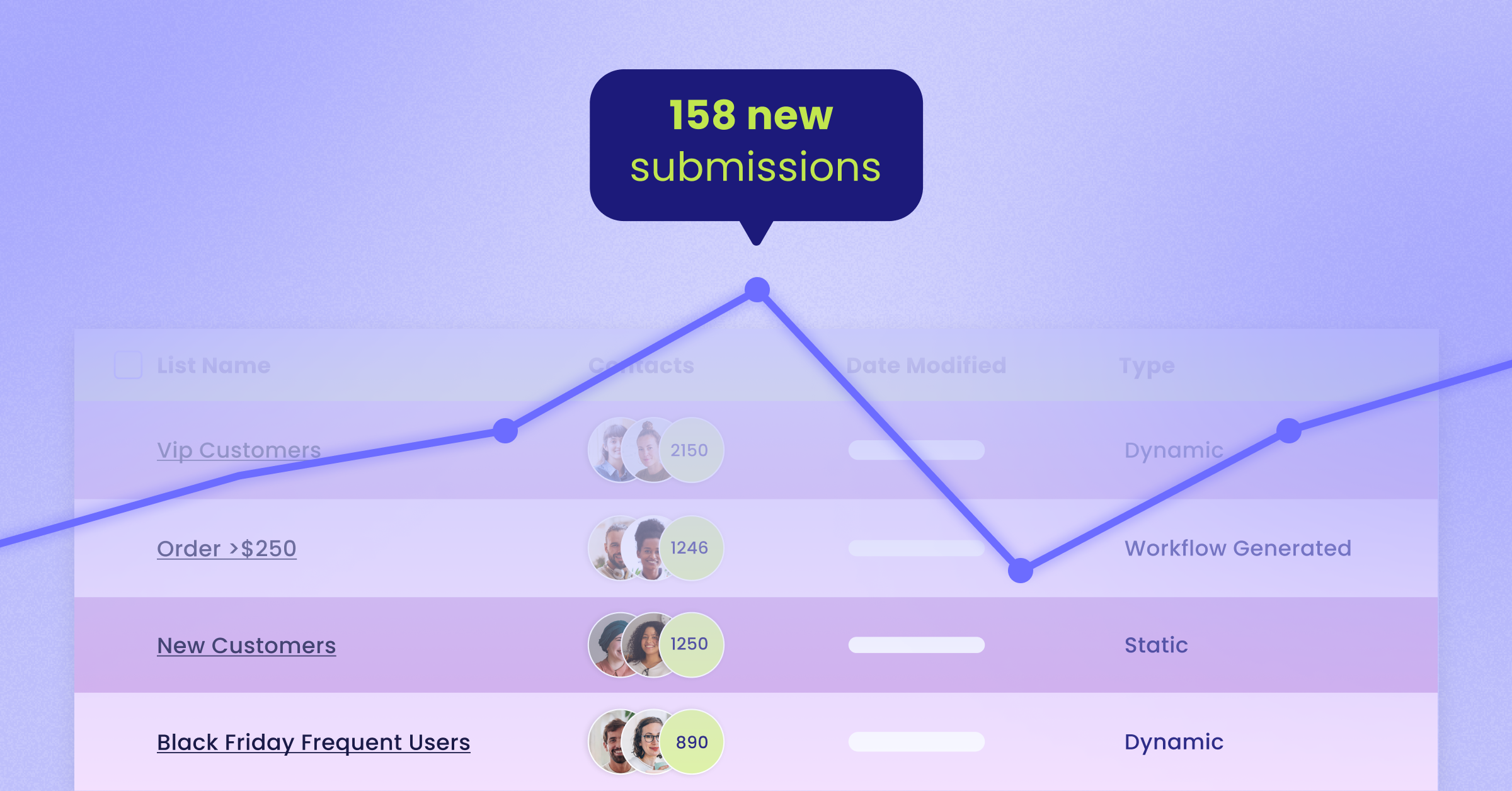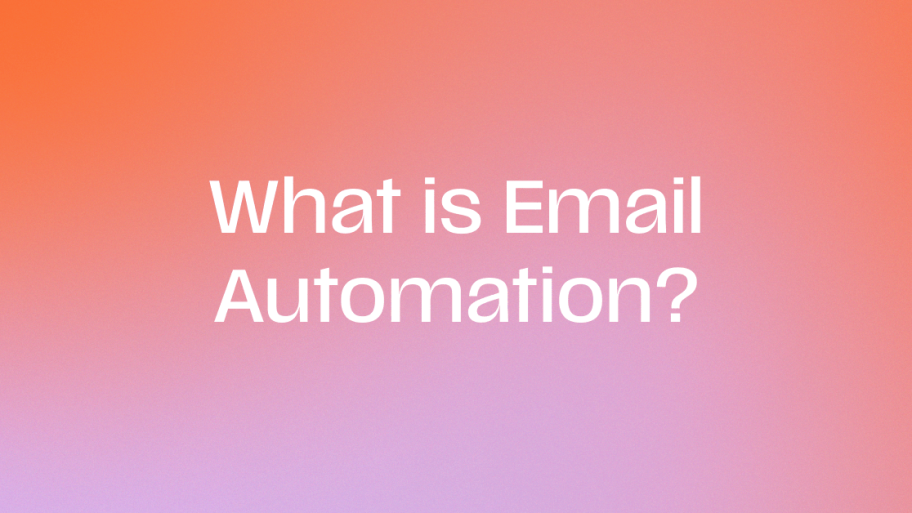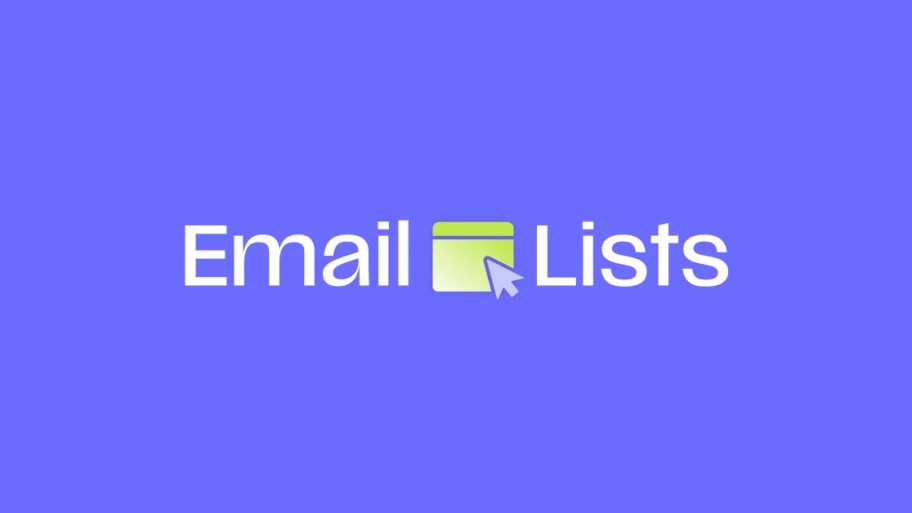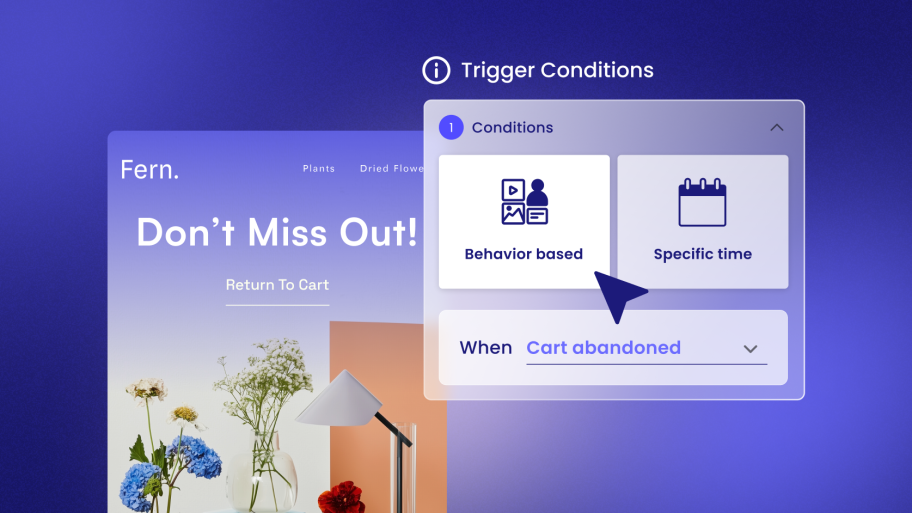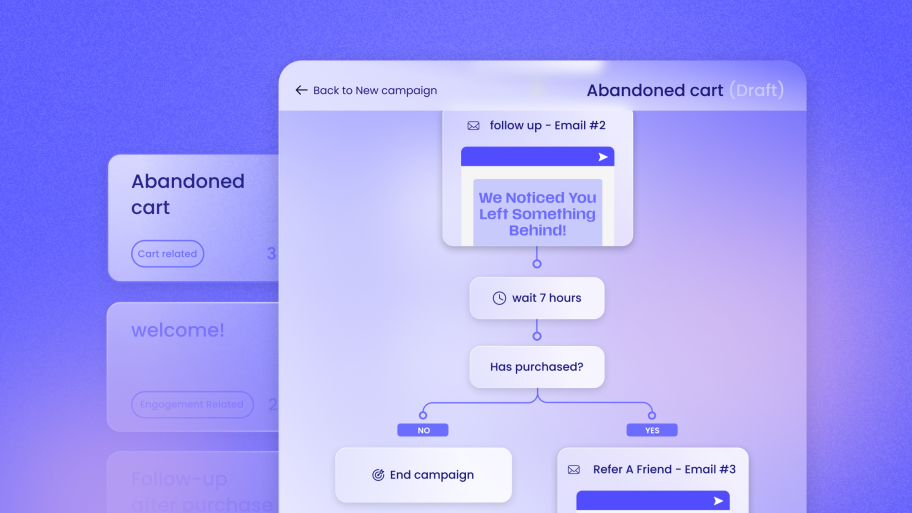This guide provides a comprehensive, step-by-step roadmap for building a high-quality email list from the ground up. We’ll cover everything from the foundational strategies and essential tools to advanced techniques that will turn casual visitors into loyal subscribers and brand advocates.
Why Your Business Needs a Strong Email List
In today’s digital landscape, a strong email list is not just a “nice-to-have”—it’s a core component of a resilient and profitable business strategy. The reasons go far beyond simply sending newsletters. A well-managed email list offers unparalleled returns, stability, and opportunities for deep customer engagement.
The Unmatched ROI of Email Marketing
Year after year, email marketing consistently delivers one of the highest returns on investment of any digital channel. Statistics frequently show that for every dollar spent on email marketing, businesses can expect an average return of over $35. What’s the secret to this success? It lies in the nature of the communication. Unlike a passing social media post, an email lands in a personal space—the inbox. Subscribers have explicitly given you permission to be there, making them far more receptive to your message.
This direct channel is perfect for:
- Driving sales and revenue through targeted promotions, new product launches, and exclusive offers.
- Nurturing leads by providing valuable content that guides them through the buyer’s journey.
- Increasing customer lifetime value by encouraging repeat purchases and building loyalty.
Owning Your Audience in an Era of Rented Platforms
Think about your followers on social media or the traffic you get from search engines. You don’t own those audiences; you’re essentially renting them from platforms like Meta, Google, and TikTok. These platforms can—and do—change their algorithms at a moment’s notice, which can drastically reduce your reach and force you to increase your ad spend just to connect with the same people.
Your email list, however, is an asset you own completely. No algorithm can stand between you and your subscribers. This stability is invaluable, providing a reliable communication channel that isn’t dependent on the whims of third-party platforms.
Furthermore, as privacy regulations tighten and third-party cookies are phased out, the value of first-party data is soaring. First-party data is information that customers willingly and directly share with you. An email list is one of the richest sources of this data. By collecting email addresses, you’re not just getting a contact; you’re building a database of customers who trust you with their information, allowing you to create the personalized experiences they now expect.
The Foundation for Long-Term Customer Relationships
A successful business is built on strong customer relationships, and email is one of the best tools for cultivating them. It allows you to move beyond purely transactional interactions and build genuine emotional loyalty. Through strategic segmentation and personalization, you can send messages that are incredibly relevant to each subscriber’s interests, purchase history, and behavior.
Imagine sending a special offer to a customer on their birthday, recommending products based on their past purchases, or providing exclusive content tailored to their expressed interests. These thoughtful touchpoints make customers feel seen and valued, transforming them from one-time buyers into loyal brand advocates who not only keep coming back but also spread the word about your business.
Laying the Groundwork: Choosing the Right Tools
Before you can implement any list-building strategies, you need a robust platform to manage your subscribers and campaigns. The right tool will act as the central hub for your entire email marketing operation, so choosing wisely is critical. It should be powerful enough to scale with your business but intuitive enough to not slow you down.
Essential Features of a Modern Email Marketing Platform
As you evaluate your options, look for a solution that includes these core features:
| Feature | Why It’s Essential |
| Drag-and-Drop Email Builder | Allows you to create professional, responsive emails without needing to write any code. Look for a tool with a library of ready-made templates to get started quickly. |
| Marketing Automation | The ability to create automated workflows (or “flows”) is non-negotiable. This includes welcome series, abandoned cart reminders, and re-engagement campaigns that run in the background. |
| Audience Segmentation | Your platform must allow you to divide your audience into smaller groups based on demographics, behavior, and purchase history. This is the key to sending targeted, relevant messages. |
| Lead Generation Tools | The platform should provide tools to capture leads, such as customizable pop-up forms, embedded forms, and landing pages. |
| Comprehensive Analytics | You need clear, real-time data on your campaign performance. This includes open rates, click-through rates, and, most importantly, revenue attribution to see your ROI. |
| SMS Marketing Integration | An integrated solution that combines email and SMS allows you to create a cohesive, multi-channel communication strategy from a single platform, engaging customers on their preferred channel. |
The Critical Advantage of a WordPress-Native Solution
For businesses built on WordPress, choosing a tool that is native to the platform offers a decisive advantage. Non-native marketing platforms often create significant friction. You’re forced to manage clunky APIs, wrestle with data-syncing issues, and worry about potential plugin conflicts that can slow down or even break your site. This complexity creates a fragmented workflow that costs you time and efficiency.
A WordPress-native solution eliminates these headaches entirely.
Send by Elementor is an all-in-one communication toolkit built from the ground up to integrate seamlessly with WordPress and WooCommerce. Because it lives inside your WordPress dashboard, it creates a unified, streamlined experience.

With Send by Elementor, you can:
- Manage everything in one place. Build campaigns, manage contacts, and track performance without ever leaving your WordPress admin area.
- Eliminate integration friction. The connection to WooCommerce is direct and robust, ensuring your customer and sales data is always accurate and available for segmentation and automation.
- Leverage powerful, easy-to-use tools. It combines Email Marketing, SMS Marketing, Marketing Automation, Segmentation, and Analytics into a single, intuitive toolkit.
- Launch faster with pre-built solutions. Use ready-made templates based on Elementor’s design best practices and launch pre-built automation flows for high-impact scenarios like Abandoned Cart reminders and Welcome Series with just a few clicks.
- Prove your ROI with clear analytics. The platform provides demonstrable, real-time analytics that directly connect your marketing activities to sales and customer retention, making it easy to see what’s working.
For web creators and agencies, this native integration is a game-changer. It empowers you to expand your client offerings beyond website builds, providing ongoing marketing services that generate recurring revenue and foster stronger, long-term client relationships.
7 Powerful Strategies to Actively Grow Your Email List
With the right platform in place, you’re ready to start actively growing your subscriber base. The most effective strategies offer a clear value exchange: you provide something worthwhile, and in return, visitors share their email address. Here are seven proven methods to build your list.
1. Optimize Your Website with High-Converting Forms
Your website is the most valuable real estate you have for capturing leads. Every visitor is a potential subscriber, but you have to make it easy and compelling for them to sign up.
Strategic Placement of Static Forms
Integrate simple, clean sign-up forms in high-visibility locations across your site where visitors are already engaged. Key spots include:
- Header or Navigation Bar: A subtle sign-up link or button here ensures it’s always accessible.
- Website Footer: Users often scroll to the footer for contact information or social links, making it a natural place for a subscription form.
- Blog Sidebar: Visitors reading your blog are already interested in your expertise, making them highly likely to subscribe for more.
- End of Blog Posts: After finishing a valuable article, readers are often looking for the next step. A subscription form is a perfect call to action.
- About Us Page: People visiting this page are trying to connect with your brand. Invite them to join your community.
Leveraging Smart Pop-ups and Overlays
Pop-ups can be incredibly effective when used thoughtfully. Instead of interrupting the user experience, they should enhance it by appearing at the right moment with a relevant offer. Consider these types:
- Exit-Intent Pop-ups: These appear when a visitor moves their cursor to exit the page, giving you one last chance to capture their attention with a compelling offer.
- Timed Pop-ups: Set these to appear after a visitor has been on a page for a certain amount of time (e.g., 30-60 seconds), indicating they are engaged.
- Scroll-Depth Pop-ups: These trigger after a visitor has scrolled a specific percentage down the page (e.g., 70%), signaling a high level of interest in the content.
You can also boost conversions by incorporating social proof. For instance, a tool like
SalesPop displays small, real-time notifications of recent sales or sign-ups, which builds trust and creates a fear of missing out (FOMO) that encourages others to take action.
2. Create Irresistible Lead Magnets
A lead magnet is a free resource or incentive you offer in exchange for an email address. This is the “value” in your value exchange. For it to be effective, it needs to be highly relevant to your target audience and solve a specific problem for them.
Types of Lead Magnets for Different Businesses
The best lead magnet depends on your business model and your audience’s needs.
| Business Model | Recommended Lead Magnets |
| eCommerce Stores | – Percentage-off or dollar-off discount codes- Free shipping on the first order- Early access to sales and new products- Entry into a product giveaway |
| SaaS Companies | – Free trial or demo of your software- A helpful checklist or template- An industry-specific case study or whitepaper |
| Bloggers/Consultants | – An in-depth eBook or guide- Access to an exclusive webinar or video training- A resource library or toolkit- A free email course |
| Service-Based Businesses | – A free consultation or quote- A step-by-step guide to achieving a specific result- A template or worksheet related to your service |
3. Turn Your Content into a Subscriber Engine
Your content marketing efforts can be a powerful engine for list growth if you strategically integrate subscription opportunities.
Content Upgrades
A content upgrade is a highly specific lead magnet that is offered within a piece of content. It provides a bonus resource that complements the topic of the article or video. For example:
- In a blog post titled “10 Recipes for Healthy Smoothies,” a content upgrade could be a printable PDF with all the recipes.
- In an article about financial planning, a content upgrade could be a downloadable budget spreadsheet. Content upgrades have incredibly high conversion rates because they are hyper-relevant to what the visitor is already consuming.
Using Video and Interactive Content
Video is a highly engaging medium. You can leverage it for list building by:
- Gating high-value videos: Place your most in-depth tutorials or webinars behind an email sign-up form.
- Using video creation tools: Platforms like Vimeo Create simplify video production, allowing you to create professional-looking content that you can use to attract subscribers.
- Creating dedicated landing pages: Use a tool like Canva Page Builder to design beautiful, SEO-optimized landing pages for your video series or webinars where visitors can sign up.
4. Harness the Power of Social Media
Your social media followers have already shown interest in your brand, making them excellent candidates for your email list.
- Promote Your Lead Magnet: Regularly share your lead magnets on your social channels, explaining the value and providing a clear link to sign up.
- Optimize Your “Link in Bio”: Use your profile bio on platforms like Instagram and TikTok to direct followers to a dedicated landing page for your email list.
- Run Lead Generation Ads: Use the powerful targeting features of platforms like Facebook and Instagram to run ads that promote your lead magnet directly to your ideal audience.
- Sync Your Store: Use the Facebook & Instagram app by Meta to connect your eCommerce store, create shoppable posts, and drive traffic from social media directly to your products and sign-up forms.
5. Engage Visitors with Quizzes and Surveys
Interactive content like quizzes is a fun and effective way to engage your audience while gathering valuable data. You can create a “product recommender” quiz that helps visitors find the perfect product for their needs. At the end of the quiz, ask for their email address to send them their personalized results.
Tools like
Octane AI specialize in creating these types of quizzes for Shopify stores. This strategy is powerful because it provides immediate value to the visitor and gives you zero-party data—information they willingly provide—that you can use for future personalization.
6. Host Webinars and Online Events
Webinars are high-value lead magnets that position you as an expert in your field. They allow you to connect with your audience in a live, interactive format and attract highly qualified leads. To use a webinar for list building:
- Choose a relevant topic that solves a major pain point for your target audience.
- Promote the event across all your channels: social media, your website, and through any existing partners.
- Require registration with an email address to attend.
- During the webinar, deliver exceptional value and end with a special offer for attendees.
- Afterward, send the recording and a follow-up sequence to all registrants.
7. Run Contests, Giveaways, and Referral Programs
Everyone loves the chance to win something for free. You can run a giveaway for one of your products or a bundle of related items and make email entry a requirement. This can quickly generate a large number of new subscribers.
You can also empower your existing subscribers to grow your list for you by implementing a referral program. Reward subscribers with points, discounts, or exclusive content for every friend they refer who signs up for your list.
Nurturing Your List: Best Practices for Long-Term Success
Getting subscribers is only half the battle. Now you need to nurture them to build lasting relationships and prevent them from hitting the unsubscribe button.
The Importance of a Welcome Series
Your welcome series is your single biggest opportunity to make a great first impression. This is an automated sequence of emails that goes out immediately after someone subscribes. Don’t just send one email—create a series of 3-5 emails that accomplishes the following:
- Email 1 (Immediate): Deliver the lead magnet you promised, thank them for subscribing, and set expectations for what’s to come.
- Email 2 (Day 2): Tell your brand story. Connect with them on a personal level.
- Email 3 (Day 4): Showcase your best content or most popular products. Provide social proof like testimonials or reviews.
- Email 4 (Day 6): Ask them a question to encourage a reply or ask them to segment themselves by clicking a link that indicates their interests.
List Hygiene: Why and How to Clean Your List
Over time, some subscribers will become inactive. Sending emails to people who never open them can hurt your sender reputation and email deliverability. It’s essential to regularly “clean” your list.
- Identify inactive subscribers: Create a segment of subscribers who haven’t opened or clicked an email in the last 90-180 days.
- Run a re-engagement campaign: Send this segment a final, compelling offer or a simple “Are you still interested?” email.
- Remove non-responders: If they don’t engage with your re-engagement campaign, it’s time to remove them from your list. It’s better to have a smaller, highly engaged list than a large, inactive one.
The Double Opt-in vs. Single Opt-in Debate
| Method | Pros | Cons |
| Single Opt-in | – Faster list growth- Less friction for the user | – Can lead to more typos and fake email addresses- Lower engagement rates |
| Double Opt-in | – Higher quality, more engaged subscribers- Better deliverability and fewer spam complaints- Confirms user intent | – Slower list growth- Some users may not complete the confirmation step |
While single opt-in is tempting for its speed, double opt-in is the recommended best practice. It ensures that every subscriber on your list truly wants to be there, which leads to better results in the long run.
Segmentation: The Key to Relevance and Engagement
Sending the same message to everyone on your list is a recipe for low engagement. Segmentation is the practice of dividing your list into smaller groups so you can send them highly relevant content. A platform like
Send by Elementor allows for deep segmentation based on a wide range of data points.
You can segment your audience based on:
- Purchase History: New customers, repeat customers, customers who bought a specific product.
- Demographics: Location, age, gender.
- On-Site Behavior: Which pages they’ve visited, whether they’ve abandoned a cart.
- Email Engagement: Subscribers who open every email vs. those who engage less frequently.
The more you segment, the more personal and effective your email marketing will become.
Conclusion: Your Email List is Your Most Valuable Asset
In a digital world defined by constant change, your email list is a source of stability, growth, and direct connection. It is one of the most valuable assets your business can build, providing a direct line to your customers that you control completely. By focusing on providing genuine value, choosing the right tools for your workflow, and consistently implementing the strategies outlined in this guide, you can build a thriving email list that fuels your business for years to come.
For those operating within the WordPress ecosystem, the path is even clearer. A native solution like
Send by Elementor removes the technical friction and consolidates the essential tools you need into a single, powerful platform. This allows you to stop wrestling with technology and focus your energy on what truly matters: creating great experiences and building lasting relationships with your audience. The time to start building your list is now.
